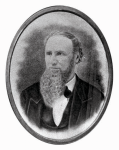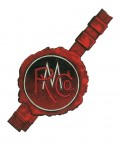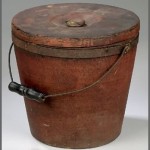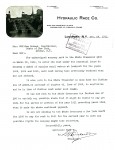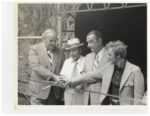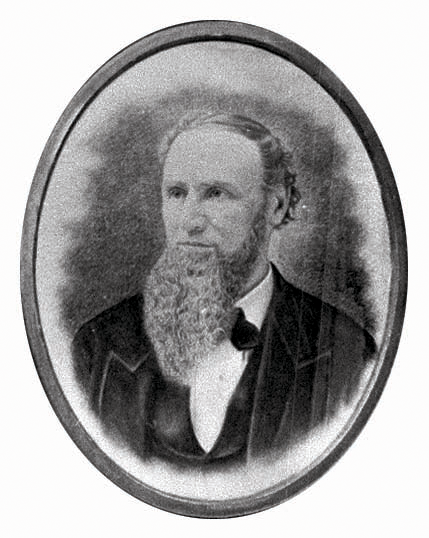
Birdsill Holly, a hydraulic engineer and inventor, was born August 8, 1822, in Auburn, NY. He was raised in Auburn and Seneca Falls, NY.
Holly followed in his father’s footsteps as a general mechanic and millwright, becoming an apprentice in Seneca Falls. He later became a superintendent and proprietor of a large shop in Uniontown, Pennsylvania. After several years, he returned to Seneca Falls to organize the firm of Silsby, Race & Holly for the manufacture of hydraulic machinery. While there in 1855, he invented the Silsby steam fire engine and its unorthodox rotary engine and pump.
The Holly Manufacturing Company was founded in 1859 in Lockport, N.Y., for the production of sewing machines, cistern pumps, and rotary pumps. Shop facilities doubled when Holly produced machinery for the Lockport water works system, designed by Holly to pump water under pressure directly into city mains without a reservoir. The system was applied by Holly in over 2,000 cities in the U.S. and Canada.
By 1876, Holly’s interests shifted to the problems of heating buildings by steam. An experimental steam heating system tested in his home convinced Holly and others of the viability of wide-scale central steam heating, resulting in the 1877 founding of the Holly Steam Combination Company in Lockport.
Heating systems using wood insulated pipe were installed in city businesses and eventually supplemented with a series of improvements covered by more than 150 patents issued to Holly between 1876 and 1888. Central steam heating systems of the Holly design spread to cities throughout the nation. In 1880 the Holly Steam Company was reorganized into the American District Steam Company, where Holly worked as principal and consulting engineer until his death.
In 1877 Birdsill Holly dug a trench and ran a steam line 100 feet from his house to an adjoining property in Lockport to test his central heating system. He soon formed the Holly Steam Combination Company to generate steam from a boiler and distribute it to businesses and homes in Lockport.
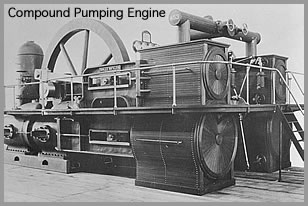
To avoid the basic inefficiencies of heating buildings with individual small boilers, Holly’s system used a large central boiler plant that furnished steam under moderate pressure to a group of buildings in a surrounding district through a loop of supply and return mains, which were heavily insulated to reduce heat loss. Each customer was charged for the steam consumed, determined by metering the water of condensation.
Various steam regulating and measuring devices were developed to control and monitor the flow of steam in the system and to individual delivery points. All of these were designed and produced by Birdsill Holly and his companies.
ASME recognized one of the earliest district heating systems still operable – the Detroit Edison District Heating System which was designated a national landmark in 1985.
The Holly System of Fire Protection and Water Supply is the first National Mechanical Engineering Heritage Site. The Holly System of District Heating is the second National Mechanical Engineering Heritage Site. Site designations note an event or development of clear historical importance to mechanical engineers. Each designation reflects its influence on society, in its immediate locale, nationwide, or throughout the world.
Holly’s Lockport’s Central Systems for Fire, Steam and Water
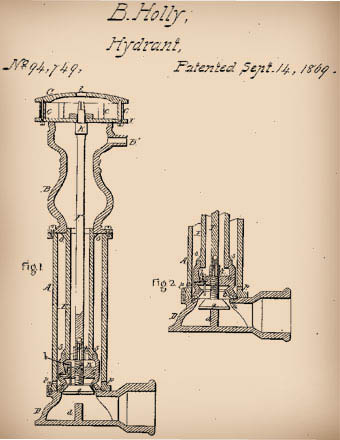 In an era when bucket brigades were still viable options for fire fighting, Birdsill Holly devised a system to deliver water upon demand plenty of it with enough force to drive it hundreds of feet into the quick of a fire. The same pipelines soon provided the municipal water supply. And from this site, Holly later invented district steam heating.The American Society of Mechanical Engineers (ASME) recognised the achievements of Birdsill Holly with ceremonies in Lockport, N.Y. where Holly settled and introduced his first systems.Dr. Serge Gratch, Past President of ASME, presented bronze plaques to Mayor Ray Betsch for two National Mechanical Engineering Heritage site designations: the Holly System of Fire protection and Water Supply, installed in 1863, and the Holly System of District Heating, introduced in 1877.These designations are the first to be made by ASME under the new category of Mechanical Engineering Heritage Site. ASME History and Heritage programs, which have recognized 120 Historic Mechanical Engineering Landmarks since 1971, have been expanded to include heritage sites and collections of significance to mechanical engineering.According to early records of the Holly Manufacturing Company, Birdsill Holly believed his system dispensed with the need for reservoirs (the gravity system) and fire engines. He explained the advantage of his system: ‘Water is not merely distributed to hydrants, but sent there under pressure, so that all that is required is to couple on the hose and turn on the stream.’
In an era when bucket brigades were still viable options for fire fighting, Birdsill Holly devised a system to deliver water upon demand plenty of it with enough force to drive it hundreds of feet into the quick of a fire. The same pipelines soon provided the municipal water supply. And from this site, Holly later invented district steam heating.The American Society of Mechanical Engineers (ASME) recognised the achievements of Birdsill Holly with ceremonies in Lockport, N.Y. where Holly settled and introduced his first systems.Dr. Serge Gratch, Past President of ASME, presented bronze plaques to Mayor Ray Betsch for two National Mechanical Engineering Heritage site designations: the Holly System of Fire protection and Water Supply, installed in 1863, and the Holly System of District Heating, introduced in 1877.These designations are the first to be made by ASME under the new category of Mechanical Engineering Heritage Site. ASME History and Heritage programs, which have recognized 120 Historic Mechanical Engineering Landmarks since 1971, have been expanded to include heritage sites and collections of significance to mechanical engineering.According to early records of the Holly Manufacturing Company, Birdsill Holly believed his system dispensed with the need for reservoirs (the gravity system) and fire engines. He explained the advantage of his system: ‘Water is not merely distributed to hydrants, but sent there under pressure, so that all that is required is to couple on the hose and turn on the stream.’
Municipal systems and fire plugs were not new in Europe and New England states. While fighting patent infringements, Holly acknowledged that a water supply had been furnished by means of forcing pumps and that stationary pumps had been employed to extinguish fires. His invention was the development of a single apparatus to effectively attain both these ends.
Birdsill Holly passed on April 27th 1894.
For Additional Information See “THE LIFE AND TIMES OF BIRDSILL HOLLY”
by Madelynn P. Fredrickson, December 1966.



















